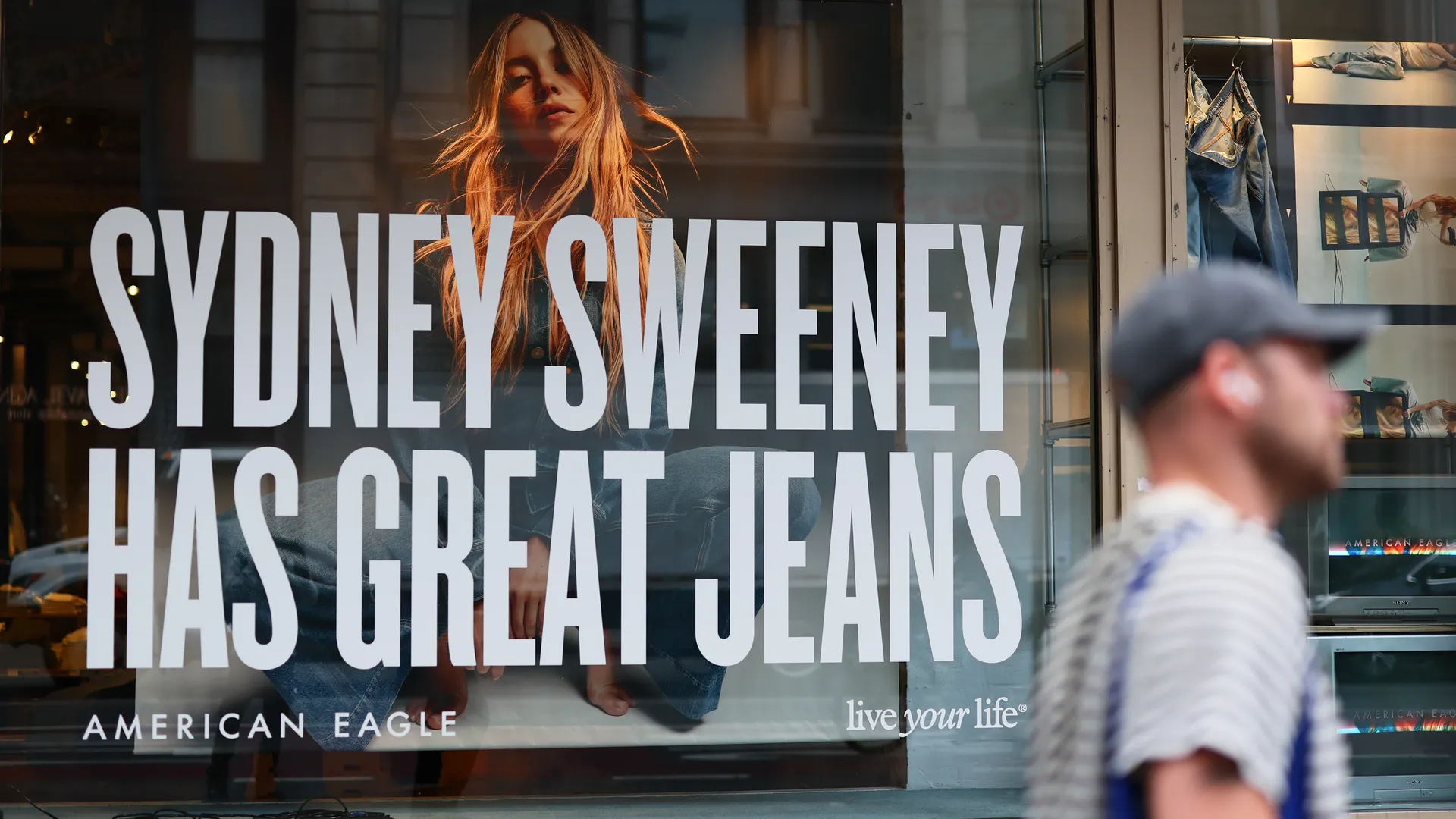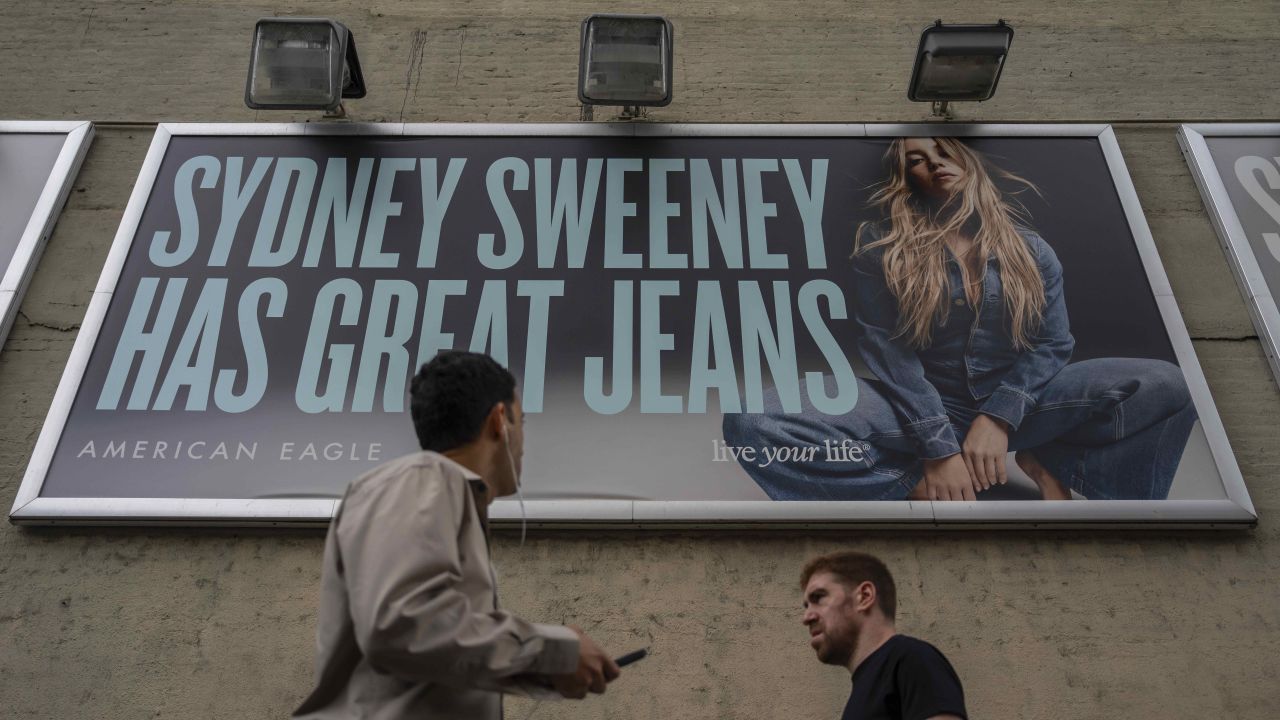
Image sourced from the internet
There is always that day in October or November when we sense, with unnerving clarity, that a definitive seasonal shift is approaching. In South Florida, such a prelude might be dismissed as a joke; here, in the North, it must be taken a little more seriously.
Personally, I regard every sign of change with the seriousness it deserves. Evolution prepared us for this: to anticipate hostile scenarios, seek gentler alternatives, build shelter when needed, and store provisions. This breeze carries the scent of a sea more unsettled than usual.

Image sourced from the internet
American Eagle’s Sydney Sweeney Has Great Jeans campaign has triggered alarms. It has become a textbook case of how an apparently harmless advertising gesture can unleash a small cultural storm. Its slogan, built on the phonetic similarity between jeans and genes, does more than play with language — it opens a field of meanings that, in the current political climate of the United States, takes on a troubling ideological resonance.
In one of the spots, the Euphoria actress explains that “genes are passed from parents to children and determine traits like hair color, personality, and even eye color,” before concluding, “My jeans are blue.” Beware: the phrase, amusing on the surface, is visually coupled with tight close-ups of her blonde hair and blue eyes, reinforcing an image that, in semiotic terms, aligns with the hegemonic ideal of Anglo-Saxon beauty. In this context, the wordplay evokes — however unintentionally — imaginaries tied to racial privilege and eugenics.
The problem lies not solely in the literal message, but in its potential for evocation. A sign is not only what it says; it is also what it summons. Here, the signifier genes drags along the memory of ideologies that ranked bodies and physical traits, from social Darwinism to the racist theories promoted by Nazism. Without explicitly stating it, the ad becomes an amplifier for recurring discourses on racial purity.

Image sourced from the internet
Some have felt discomfort; many of us have entered a state of alert. A portion of the audience sharpens its senses.
American Eagle defends the campaign as a simple celebration of personal confidence in dress, yet its insistence that “it has always been only about jeans” suggests a gap between intention and reception. In today’s media ecosystem, meaning is no longer the exclusive property of the sender: it is negotiated — and often rewritten — by the communities interpreting it, then amplified by the velocity of digital circulation.
The visual component only reinforces the problematic reading. The dominance of blue in the color palette — in the jeans, in her eyes, in certain backdrops — combined with white and clean lighting, constructs an atmosphere of “purity” and calibrated order. The absence of warm tones and of phenotypic diversity on screen anchors the message to a homogeneous ideal. Compositionally, Sweeney is always centered, isolated from any social context, transformed into an autonomous aesthetic icon.
Corporeality and gesture matter as well. A restrained yet suggestive pose meets the camera head-on. The unhurried pacing of her delivery creates an intimacy that invites the viewer to share in the complicity of the double entendre. This direct gaze is not innocent: it intensifies the personal appropriation of the message, whether for commercial or ideological ends.

Image sourced from the internet. Such a beautiful little dog.
The controversy took on an even sharper political edge when Donald Trump praised the ad after learning that Sweeney is a registered Republican in Florida. In his reading, the campaign becomes a useful emblem for attacking what he calls “woke” advertising and for reinforcing his cultural narrative. Figures like Vice President J.D. Vance and Senator Ted Cruz lauded her as an example of “American beauty,” legitimizing the racialized interpretation and strengthening its value as an identity marker.
This episode confirms that, at present, contemporary advertising does not operate in neutral territory. Visual and verbal codes are laden with intertextualities that can be reactivated by political context, by the biography of the public figure involved, and by the agendas of the media. The commercial message becomes a node within wider discursive networks, where interpretations may be contradictory — even opposed — yet equally potent.
Ultimately, the campaign underscores a dilemma for brands and creators alike: in the age of hyperinterpretation, every aesthetic and linguistic choice is a political act. At a historical moment when white supremacism and exclusionary policies are reclaiming space in public discourse, the choice of words, framing, and colors is anything but trivial. The question is no longer whether the message set out to provoke, but which social and cultural forces find in it a mirror, an excuse, or a weapon.
If the sky turns ashen and you feel on your skin the uneasy caress of a cold breeze — if you detect that electric scent in the air — find a coat, and keep it close at hand.














Comments powered by Talkyard.